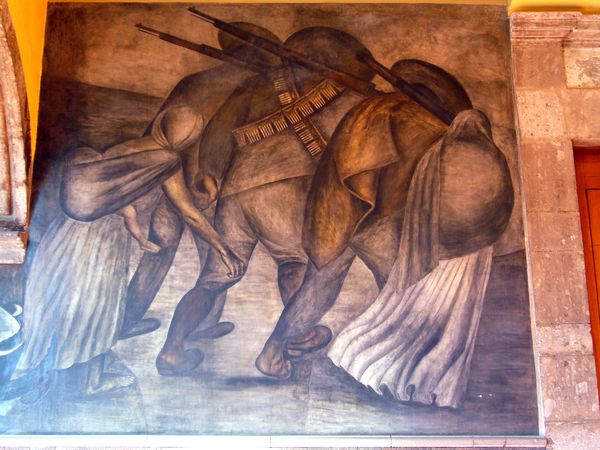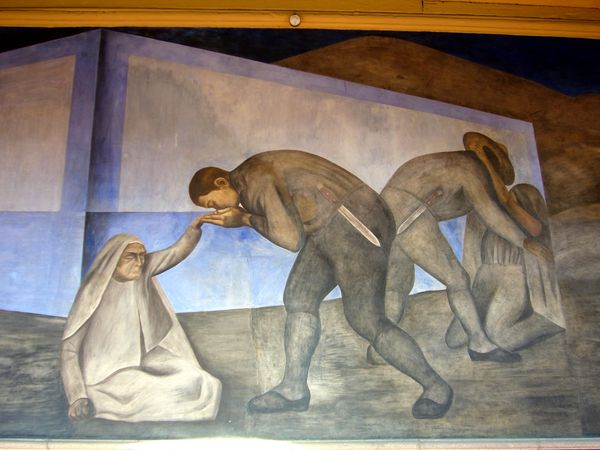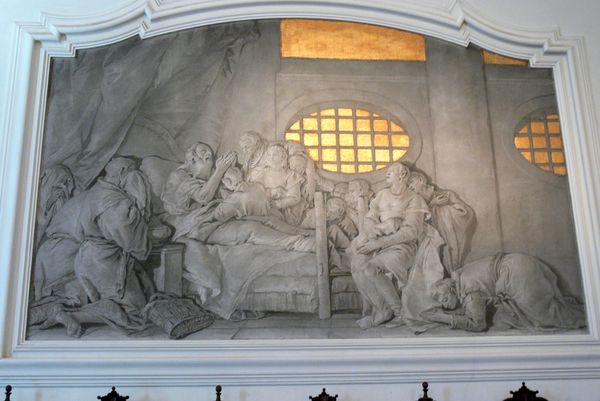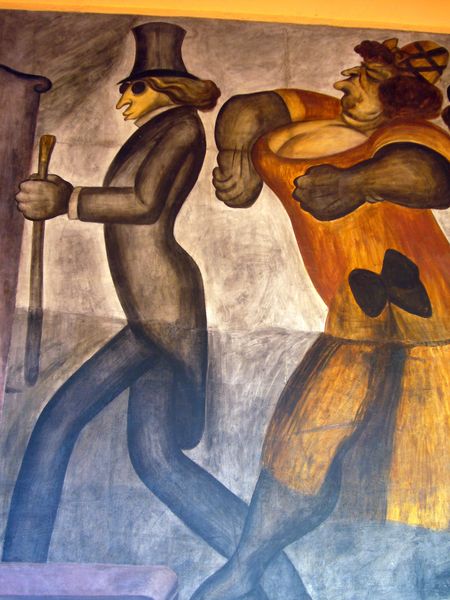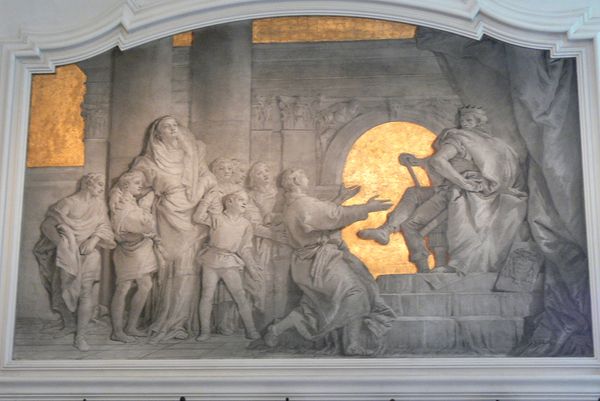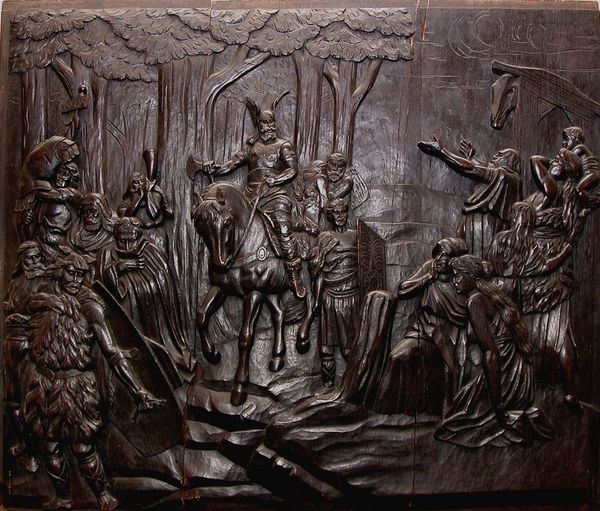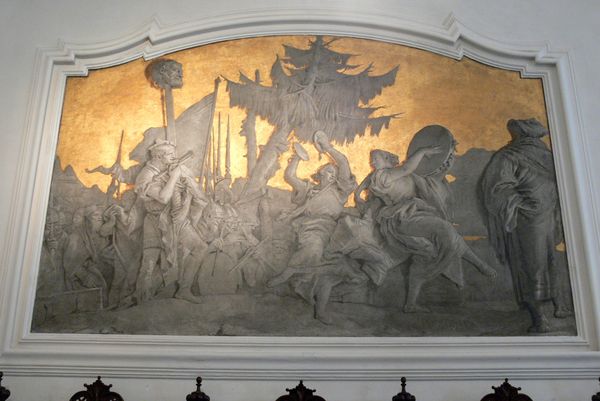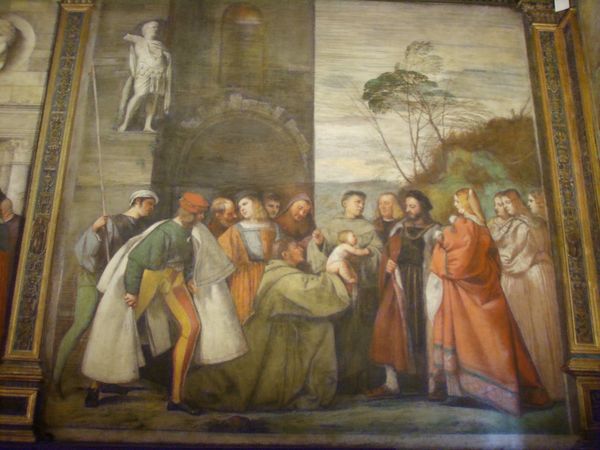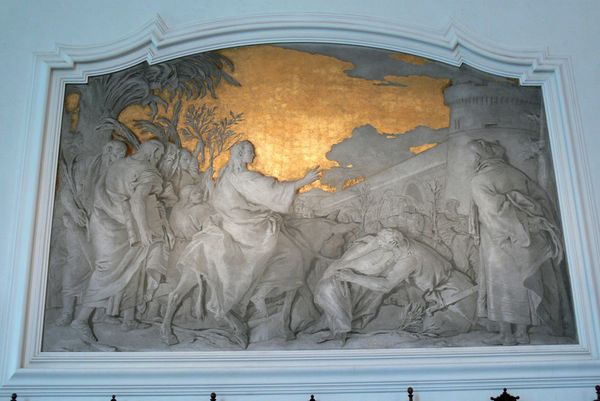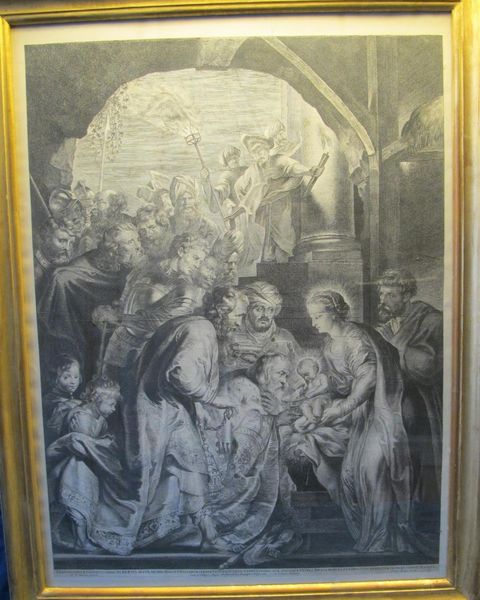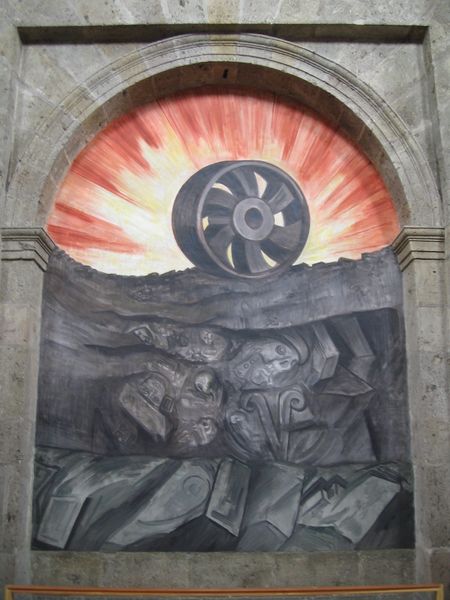
oil-paint, mural
#
allegories
#
narrative-art
#
oil-paint
#
figuration
#
oil painting
#
mexican-muralism
#
history-painting
#
mural
Copyright: Public domain
Editor: So, this mural is titled "La Acechanza," or "The Ambush," by José Clemente Orozco, painted in 1926. It's done in oil paint. It definitely has a sinister mood. What compositional elements jump out at you? Curator: The stark contrasts are crucial. The artist orchestrates a visual grammar rooted in tonal opposition. Observe the limited color palette; shades are deployed to construct depth and mold the figures, which exist in dynamic relationships, each defined by their sharp delineation from what surrounds them. What does the geometry tell us? Editor: Well, the figures are arranged in a sort of linear progression, from left to right, leading the eye across the scene, but the bulky figures push against that movement, creating tension. It seems staged somehow, like an allegory. Curator: Indeed. Semiotics offer tools to unpack Orozco’s motives here. Consider the symbolism intrinsic in each figure, in what each wields. This piece reflects upon social inequalities. Notice how the composition, in its geometric tension, reflects structural hierarchies inherent to class struggles. Orozco offers the formal visual properties that become inseparable from ideological considerations. Editor: So you’re saying that the way the mural is painted, its form, supports its political message. The lines, colors, shapes, they’re not just aesthetic, but actively communicating inequality? Curator: Precisely. Consider the aggressive brushstrokes. Through this syntax, Orozco renders not only shapes, but a raw sense of social unease. Orozco employs a conscious orchestration of formal elements, embedding thematic concerns within the very framework of visual experience. Are you interpreting this formal arrangement in a similar light? Editor: It gives me a fresh way of approaching how artists tackle such potent themes using pictorial space, perspective, and color... really intriguing. Curator: Yes, the visual structure provides keys that unlock narratives and historical analysis and help decode symbols within the artwork.
Comments
No comments
Be the first to comment and join the conversation on the ultimate creative platform.
